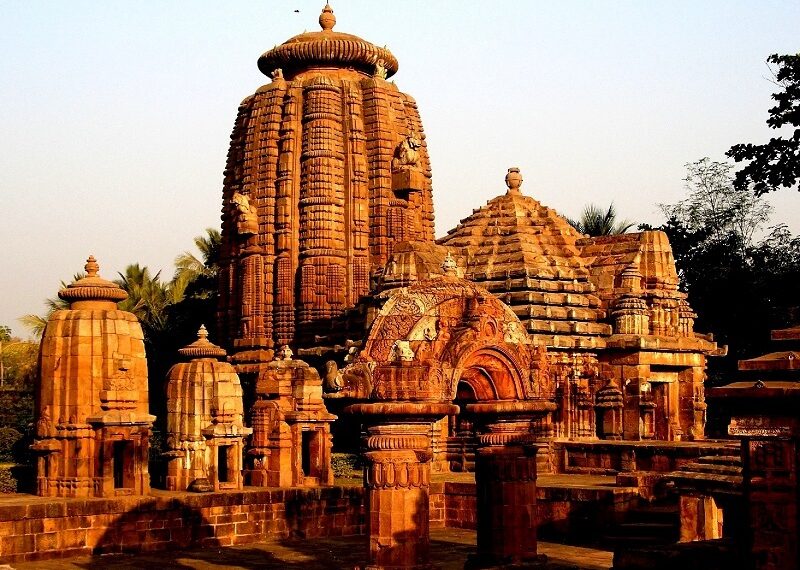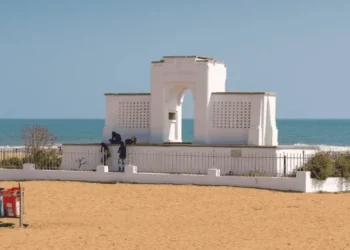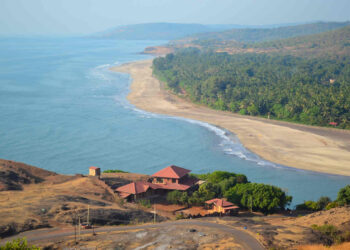In Bhubaneswar, Odisha, the Mukteshwar Temple stands as a holy place of worship for Lord Shiva. Set in the old town, near Kedar Gouri lane, just 2 km from the city center, this small temple shines with old Odisha art. Its stone walls and calm yard draw devotees and travelers. Known as the “Gem of Odisha,” it holds peace and divine power. If you wish to see this sacred spot, here is a simple guide on its story, look, prayers, and how to visit.
Fun Fact: They call it “Mukteshwar” because Shiva gives moksha, or freedom from life’s pain, to those who pray with a pure heart.
Mythological Importance
Mukteshwar carries old tales. One story says a sage named Mukta sat in Bhubaneswar’s forests, praying hard to Shiva. The Lord came as a bright lingam and gave the sage moksha. Another tale tells of a king who saw Shiva dancing in a dream and built this temple. Locals say the temple’s yard has holy power, bringing peace to hearts. This makes Mukteshwar a big Shiva shrine, loved for its tie to divine grace.
Historical Overview
The temple began in the 10th century, under Somavanshi kings. Bhubaneswar was a holy city, old books tell. A stone from 950 CE near the temple speaks of a lingam here. King Yayati I added a big arch, called torana, carvings show. In the 1400s, Ganga kings made a wall around it, temple logs say. In the 1800s, priests kept prayers going. After 1947, Odisha’s leaders cared for it. Now, the Archaeological Survey of India keeps it safe. From 2010 to 2018, they fixed paths but left the old stone look. Saints like Salabega sang of Shiva here, spreading its name. Today, it pulls thousands to Bhubaneswar’s sacred ground.
Architecture of Mukteshwar Temple
The temple, standing around 35 feet tall, showcases the Kalinga architectural style and is often referred to as the “Gem of Odisha” due to its detailed and ornate design. Notable features include diamond-shaped lattice windows, intricate carvings, and sculptures inspired by the Panchatantra tales.
Encircled by an octagonal wall adorned with carvings, the temple represents a newer architectural evolution compared to earlier structures. This innovation later influenced the construction of other temples in the region.
Small shrines for Parvati and Ganesha sit in the yard. Parvati’s shrine, from 1000 CE, shows her with a lion, for strength. Ganesha’s shrine, by the path, has him with a sweet, for wisdom. These little shrines add to the temple’s prayers. The hall, or jagamohana, has pillars with snake and flower carvings, pure Kalinga style.
At the entrance, visitors are greeted by a stunning arched gateway (Torana), a rare example in the city of the Pitha Deula style—a square base structure topped with a pyramid-shaped roof. This form is one of the major styles in Kalinga architecture, alongside Rekha Deula and Khakhara Deula.
The arched gateway also displays elements of Buddhist influence, flanked by two intricately carved pillars depicting smiling women adorned with beads and ornaments. The gateway is further embellished with carvings of scrollwork, female figures, peacocks, and monkeys.
The temple’s vimana sits on a raised square platform with pilasters on its outer walls, while its shikara, rising to about 34 feet, is decorated with carvings of four Natarajas and kirthimukhas. The entrance to the inner sanctum features a depiction of Ketu, shown with three hooded snakes.
Within the temple grounds, there’s a sacred tank known as Marichi Kunda to the east and a well in the southwest corner. According to local legends, bathing in Marichi Kunda is believed to help cure female infertility. Alongside the main shrine, several smaller shrines housing Shiva Lingas can also be found within the complex.
In Bhubaneswar’s old town, you reach the temple by Kedar Gouri lane. Stone paths, worn by pilgrims, pass a small tank with old carvings. The temple yard, with rough stone, feels sacred. Neem and mango trees give shade. A stone well, fed by a spring, is for ritual baths, its sides carved with waves, a Kalinga mark. Low walls have small statues, like snakes, guarding the place.
Rituals and Festivals
The temple holds festivals with joy. Mahashivratri, in February or March, is the biggest, with water offerings and lamp walks for Shiva. Shravan Maas, in July or August, has milk prayers and song nights. Deepavali, in October or November, lights lamps by the well. Daily prayers are morning chants, offerings, and evening lamp rituals. You can book special prayers like Rudra Homam or Panchamrit Puja at the temple office. A stall gives free coconut sweets as prasad. On Mondays, devotees offer bilva leaves for peace.
The Mukteshwar Dance Festival, in January, brings Odissi dance to the yard. It mixes art and faith, pulling art lovers to Bhubaneswar.
Information for Travelers
Hours and Entry: Open daily, 6:00 AM to 12:00 PM, then 3:00 PM to 8:00 PM. No entry fee, but rituals cost ₹50-300. Photos are fine outside, not in the main shrine.
Clothing: Wear simple clothes covering shoulders and knees. Men for rituals wear dhotis, often no shirt, as custom.
How to Get There:
Air: Biju Patnaik Airport, 5 km away, is closest. Taxis take 15 minutes, ₹200-300.
Train: Bhubaneswar Railway Station, 2 km away, connects to Kolkata (7 hours) or Delhi (24 hours). Autos cost ₹40-80.
Road: Baramunda Bus Stand, 7 km away, links to Puri (1.5 hours). Autos from city center cost ₹20-40.
Best Time to Visit:
October to March, 20-30°C, is cool. Weekdays are calm. Mahashivratri and dance festival are busy, so plan ahead.
Nearby Attractions:
Lingaraj Temple, 1 km away, is a big Harihara shrine.
Rajarani Temple, 1.5 km away, has music events.
Udayagiri and Khandagiri Caves, 7 km away, are old Jain sites.











